Nanopore Sensing
- PMID: 28105845
- PMCID: PMC5316487
- DOI: 10.1021/acs.analchem.6b04260
Nanopore Sensing
Figures
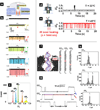
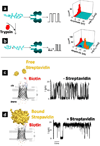
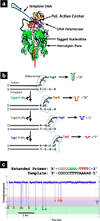

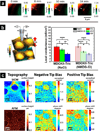
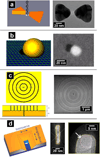
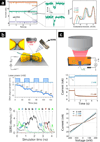

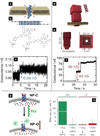
Similar articles
-
Measuring Enzymatic Activities with Nanopores.Chembiochem. 2020 Aug 3;21(15):2089-2097. doi: 10.1002/cbic.202000079. Epub 2020 Apr 21. Chembiochem. 2020. PMID: 32202055 Review.
-
Controllable Shrinking of Glass Capillary Nanopores Down to sub-10 nm by Wet-Chemical Silanization for Signal-Enhanced DNA Translocation.ACS Sens. 2017 Oct 27;2(10):1452-1457. doi: 10.1021/acssensors.7b00385. Epub 2017 Oct 17. ACS Sens. 2017. PMID: 28971672
-
Recent Advances in Aptamer-Based Nanopore Sensing at Single-Molecule Resolution.Chem Asian J. 2022 Aug 15;17(16):e202200364. doi: 10.1002/asia.202200364. Epub 2022 Jun 23. Chem Asian J. 2022. PMID: 35644914 Review.
-
Enhancing nanopore sensing with DNA nanotechnology.Nat Nanotechnol. 2016 Feb;11(2):106-8. doi: 10.1038/nnano.2016.2. Nat Nanotechnol. 2016. PMID: 26839252 No abstract available.
-
Nanobiotechnology: A new look for nanopore sensing.Nat Nanotechnol. 2011 Apr;6(4):195-6. doi: 10.1038/nnano.2011.52. Nat Nanotechnol. 2011. PMID: 21468105
Cited by
-
The double life of conductive nanopipette: a nanopore and an electrochemical nanosensor.Chem Sci. 2020 Aug 5;11(34):9056-9066. doi: 10.1039/d0sc02807j. Chem Sci. 2020. PMID: 34123158 Free PMC article. Review.
-
Protein nanopore reveals the renin-angiotensin system crosstalk with single-amino-acid resolution.Nat Chem. 2023 Apr;15(4):578-586. doi: 10.1038/s41557-023-01139-8. Epub 2023 Feb 20. Nat Chem. 2023. PMID: 36805037
-
QuipuNet: Convolutional Neural Network for Single-Molecule Nanopore Sensing.Nano Lett. 2018 Jun 13;18(6):4040-4045. doi: 10.1021/acs.nanolett.8b01709. Epub 2018 Jun 1. Nano Lett. 2018. PMID: 29845855 Free PMC article.
-
Identification of tagged glycans with a protein nanopore.Nat Commun. 2023 Mar 28;14(1):1737. doi: 10.1038/s41467-023-37348-5. Nat Commun. 2023. PMID: 36977665 Free PMC article.
-
Nanopore-based disease diagnosis using pathogen-derived tryptic peptides from serum.Nano Today. 2022 Aug;45:101515. doi: 10.1016/j.nantod.2022.101515. Epub 2022 Jun 10. Nano Today. 2022. PMID: 37034182 Free PMC article.
References
-
- Venkatesan BM, Bashir R. Nat. Nanotechnol. 2011;6:615–624. - PubMed
-
- Miles BN, Ivanov AP, Wilson KA, Dogan F, Japrung D, Edel JB. Chem. Soc. Rev. 2013;42:15–28. - PubMed
-
- Kasianowicz JJ, Robertson JW, Chan ER, Reiner JE, Stanford VM. Annu. Rev. Anal. Chem. 2008;1:737–766. - PubMed
-
- Gyurcsanyi RE. TrAC, Trends Anal. Chem. 2008;27:627–639.
-
- Friedman AK, Baker LA. In Nanoelectrochemistry. Boca Raton, FL: CRC Press; 2015. pp. 395–438.
Publication types
MeSH terms
Grants and funding
LinkOut - more resources
Full Text Sources
Other Literature Sources

